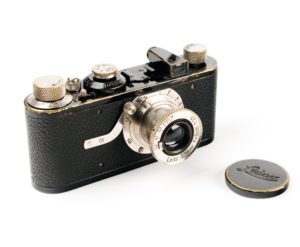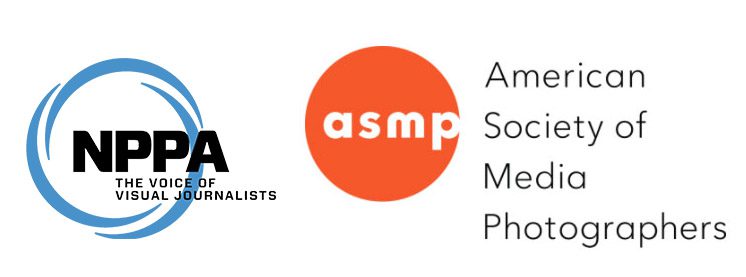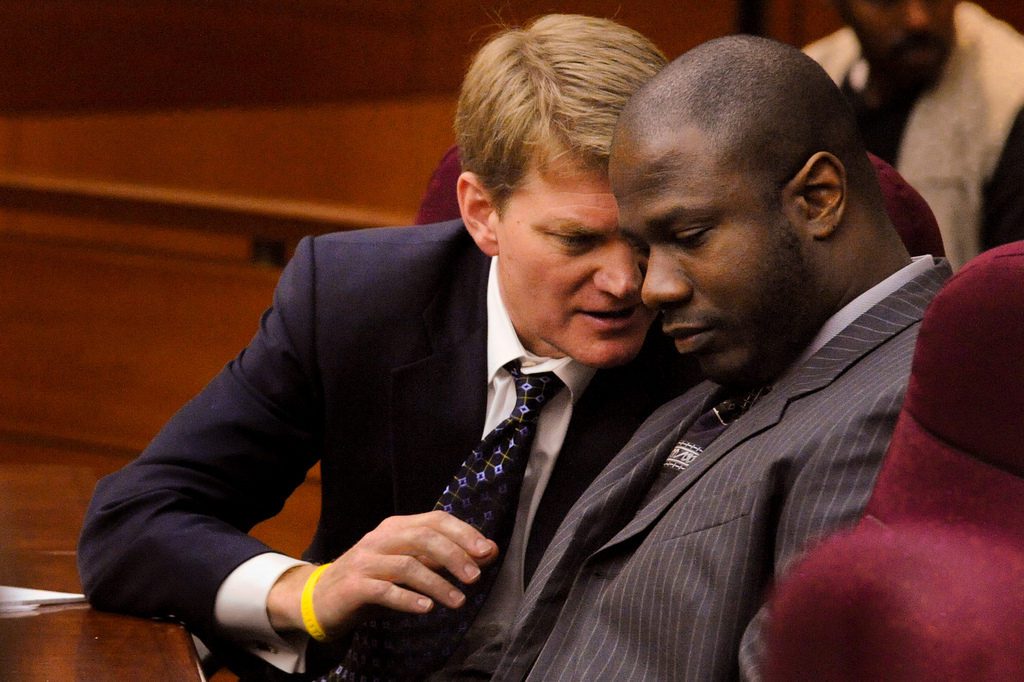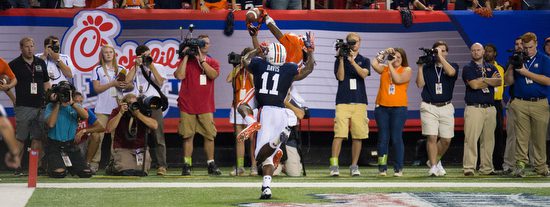I am writing this because I see the demise of ASMP and NPPA. While they may survive, I do think they have lost their luster.
These are just some of my observations on why associations struggle today. I think a timetable of events in the past 20 years has eroded the benefits of belonging to a professional photography association, especially when those memberships start at $150 to $335 per year.
Photojournalism History
The purpose of a professional association is to further a particular profession, those that work in the job, and the public interests.

Photojournalism in America took off in what many would call the Golden age of Photojournalism with the invention of Leica 35mm camera in 1925 and the flash bulb in 1927. This era would be from about 1930s to the 1960s.

The size of this camera made it so easy to go just about anywhere and create pictures. The flash allowed you to take photos where there was no light.
Taking advantage of this new technology, magazines like Life, Sports Illustrated, and Paris Match published photos that, before this time, the public would have never seen.

It was during this time, specifically from 1940 to 1950, that the National Press Photographers Association and American Society of Media Photographers were formed.
NPPA was formed more around the advancement of photojournalism. So it was heavily focused on education and contests to help its members grow in their skills and raise the industry standards regarding the quality of photojournalism produced in newspapers. Most of the members were staff photographers.
ASMP was formed by a small group of New York City photographers working with magazines. They began to address their common issues: lack of credit lines, unauthorized reproduction of their images, and uncredited copying of photos by illustrators and artists. They also were hoping to raise the rates for pay. Most of the members were freelancers.

I joined NPPA in 1985 when I was working for the Hickory Daily Record as a staff photojournalist and am still a member. In 1987 I joined ASMP (American Society of Magazine Photographers) while working on The Commission Magazine.
Around 2005 NPPA realized that more and more members were freelancers and started doing more on business practices.
Internet & Social Media Impacts Associations
I remember getting my first Radio Shack computer in 1988. It would be the turning point of my skill set in the future.
I was becoming familiar with all the resources my computer brought me from all over the world. I joined CompuServe, the first primary commercial online service provider in the United States. It dominated the field during the 1980s and remained a significant influence through the mid-1990s. At its peak in the early 1990s, it was known for its online chat system & message forums. NPPA had one of those forums.
Mosaic is the web browser that popularized the World Wide Web and the Internet. It was introduced in 1993 and was the first browser to display images inline with text instead of in a separate window.
Microsoft licensing Mosaic to create Internet Explorer in 1995 was the real take-off point for websites.
Google was founded in 1998 by Larry Page and Sergey Brin while they were Ph.D. students at Stanford University in California.
Facebook would be available to the public in 2006.
The introduction of the iPhone in 2007 was the turning point in the history of communications that now people could be connected 24/7 to the internet and changed the volume of internet users, websites, social media, and more connectivity to the world to a whole new level. People always had their phones no matter where they were, which would use them to connect and help organize their lives and work.
Instagram launched in October 2010 exclusively on Apple products. By 2016 it was available on all platforms.
The Perfect Storm
Before Mosaic, introduced in 1995, the only way for journalists to be published was through the traditional gatekeepers of printed publications. Now with minimal cost (internet access), one could publish content and reach not just readers of a printed magazine but the entire world. At least all who had access to the internet.
One such person in our industry to do this and become a rock star was David Hobby. He created The Strobist, where he shared tips for using flash. While it cost him almost nothing to publish, it also costs nothing to get his content.
Thousands would do the same on almost any topic you could imagine. Those who produced the best content were getting huge followers, and then the advertisers followed, helping to support those content providers with funds if they could advertise on their platforms.
Once someone had access to the internet, they could become a content creator or just a consumer of the content.
Right around the introduction of the iPhone, the number of users on the internet began to explode. As the numbers went up, so too were going down for many associations.
NPPA & ASMP core educational content offerings were no longer as valuable when all this content was being offered for free in other places on the internet.
Once Facebook helped people come together and create groups, websites like Classmates.com lost their base. Why pay to find your high school classmates when Facebook offers a way to find them for free and organize your class in a Facebook Group.
Now through social media, Facebook Groups were replacing the need for Associations. The best thing that NPPA & ASMP do is to create groups on the Social Media Platforms for their members. Facebook was offering a better solution for connecting than most associations.
What is left for Associations to offer
The one place NPPA has put all its eggs is in Advocacy. Most everything else they offer you can get online for free.
It was ASMP in 1973 that got the Copyright office to change that all images were copyrighted without being registered.
The purpose of copyright registration is to place on record a verifiable account of the date and content of the work in question, so that in the event of a legal claim, or case of infringement or plagiarism, the copyright owner can produce a copy of the work from an official government source. Registration remains a prerequisite to filing an infringement suit, and also because important remedies depend on prompt registration—such as attorney’s fees and statutory damages. [Wikipedia]
Now one of the worst things to happen to the profession of photography is the devaluation of photography, which occurred because new technologies [internet] made it possible for good photographs made by inexperienced professionals to flood the market. Get lots of photographers who don’t know about pricing producing work for clients who have lots more options from which to choose, and things go south fast. In other words, it’s a buyer’s market.
So, the problem we have now is that even if you can change how copyright works, the price you can get for a stock image is so devalued that few can benefit as compared to the investment costs to make those images and put them on a cloud system for people to buy.
When registering images today with the copyright office, I find that the costs of $55 for 750 photos are no longer economically feasible to warrant.
The costs a few years ago were $35 for an unlimited number of images in a submission.
So, the copyright office has totally undermined all the legal advocacy work done in the past few years. It makes you wonder what you have been paying for when you are now worse off than ever in this profession regarding copyright protection.
Example of Advocacy that doesn’t benefit photojournalist
News outlets have greatly benefitted from cameras being allowed in the courtroom. Great examples are Ted Bundy, Jeffrey Dahmer, OJ Simpson, and Casey Anthony, to name just a few.

NPPA advocacy often is to help get photojournalist access. However, NPPA members are never compensated more because they have paid out of their pockets to help those news outlets get the content that lines the pockets of those publishers.
In 1976 the National Labor Relations Board determined that ASMP was a group of independent contractors, not a union. Due to that decision, neither ASMP nor NPPA can help its members set industry prices.
Today both ASMP and NPPA have social media groups for their members and still produce educational resources, put on meetings for their members, and provide legal assistance.
How do they compete against the free offerings for groups on social media?
Membership requirements were the way that they distinguished themselves.
ASMP requirements for a Professional Membership are reserved for still and motion photographers of good moral character and reputation who have been actively and consistently engaged in professional practice for at least three years. There are other categories for membership.
NPPA requirements – working or aspiring towards working in visual journalism.
Those membership requirements have been lowered in how they verify your qualifications due to their desperate need for members to support the organizations.
My recommendations
If you are new to photojournalism and need to learn how to make better photos, then NPPA is excellent. Their contests and education programs are all about learning the craft.
If you are in business for yourself and not on staff, then you should join ASMP. This organization will do more to help you navigate how to make a living, and all their education and workshops do an excellent job of helping you run a successful business.
For those starting, you may need both.
My wish these past few years was that these two organizations could combine. They are different and yet also have so much in common. Sadly NPPA turned down ASMP’s offer to do just that.

